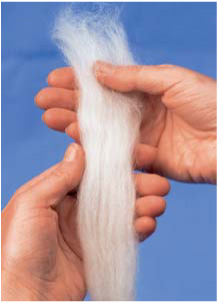wool toys & friends
Laurie Sharp
Photography by Kevin Sharp
2016 Quarto Publishing Group USA Inc.
First published in 2012 by Creative Publishing, international, an imprint of Quarto Publishing Group USA Inc., 400 First Avenue North, Suite 400, Minneapolis, MN 55401 USA. Telephone: (612) 344-8100 Fax: (612) 344-8692
quartoknows.com Visit our blogs at quartoknows.com

All rights reserved. No part of this work covered by the copyrights hereon may be reproduced or used in any form or by any meansgraphic, electronic, or mechanical, including photocopying, recording, taping of information on storage and retrieval systemswithout the written permission of the publisher. However, the publisher grants permission for the purchaser of this book to copy the patterns for personal use.
Due to differing conditions, materials, and skill levels, the publisher and various manufacturers disclaim any liability for unsatisfactory results or injury due to improper use of tools, materials, or information in this publication.
Library of Congress Cataloging-in-Publication Data
Digital Edition: 978-1-61673-836-5
Hardcover Edition: 978-1-5892-3506-9
Sharp, Laurie.
Wool toys and friends : step-by-step instructions for needle-felting
fun / Laurie Sharp ; photography by Kevin Sharp.
p. cm.
Summary: Includes instructions for needle felting and wet felting of wool fibers to shape them into toys and small figures suitable for display. Step-by-step instructions with photographs--Provided by publisher.
ISBN-13: 978-1-58923-506-9 (hard cover)
ISBN-10: 1-58923-506-1 (hard cover)
1. Felt work. 2. Felting. 3. Toy making. I. Title.
TT849.5.S532 2010
746.0463--dc22
2009043200
Photography: Kevin Sharp
Copy Editor: Catherine Broberg
Proofreader: Karen Ruth
Book Design: Judy Morgan
Page Layout: Wendy Lutge
Cover Design: everlution design
Printed in China
10 9 8 7 6 5 4 3 2 1
contents
introduction
Playthings inspire imagination and
release our inhibitions. The whimsical
nature of handcrafted toys and small
figures can invite humor and joy.
Toys and playthings are not just for children. High-quality, heirloom toys are collected and admired by young and old alike. Those fortunate enough to receive a handmade toy as a gift often treasure them as works of art.
Yet the artworks made through using this book are also toys that are meant to be played with. Though their small parts, such as beads and wheels, make them unsuitable for children under age three, older childrenand even adultswill delight in the feel and character of these toys. Parents, grandparents, and older siblings can set an example of how to gently handle these special, handmade toys. Perhaps theyll be saved for special occasions, such as long car rides or airplane trips. Or maybe theyll earn the spot on someones bed and become a nighttime snuggly companion. Some of the toys, such as the felted pumpkin house and mouse, may actually become stronger with play because the moist, warm childs hands cause the wool to felt just a bit more.

The joy of these projects is not limited to their final form. Indeed, toy making in itself is a fun and creative endeavor. The process of making these toys combines sculpting, painting, sewing, and woodworking, allowing you to play in a number of ways. The shaping and sculpting techniques with wet and needle felting can be extended to create interesting and sophisticated sculptures. All of the techniques used are easy to learn, and the materials are simple and readily available.
Dont be afraid to take on these projects, even if you have limited or no experience working with wool or wool felt. A little preparation is all thats required. Before you get started, read through the information about materials and techniques. If you have never wet felted or needle felted before, practice a little before you get going with your first project. You may even decide to invite youngsters to help with these creations. Most children age nine and up have enough dexterity to use the felting needle. Just be sure to have them work with an adult in the beginning, as the needle is very sharp. Giving them the opportunity to be creative is a gift in itself. Older children often find toy making to be very satisfying.
The last and most important tip before you dive into these projects is to have fun! I think you will soon discover why I am so passionate about this craft.
materials
.
Wool
When the sheep is sheared, the nicest parts of the fleece are picked free of debris, washed, and put through a large carding machine. The result is wool battingfluffy layers of wool fibers scattered in different directions.
The next step is to align the fibers so that they are facing the same direction and form a smooth rope or roving. Most of the wool you will use for projects in this book is available in roving form.
Roving needs to be prepared before you begin using it for felting. You will need to mess up the aligned fibers so that they are more perpendicular to each other. Do this by pulling an 18 (45.7 cm) long piece of roving into several long, thin strips. Pull these strips in half and layer again. Repeat until the wool roving seems fluffier.
Wool Felt Fabric
When wool is felted into flat sheets either by hand or by machine, it is called wool felt or simply, felt fabric. Some wool felt fabric is a combination of wool and rayon or nylon. If you compare generic synthetic felt to wool felt, you will easily see the difference in quality between the types. If you are going to spend the time making something by hand, high-quality wool felt is well worth the cost.
Woven Wool Flannel
Wool flannel is made differently than felt. Flannel is a woven material made with wool thread rather than cotton or polyester. It is not as heavy as some felt fabric. Wool flannel is a good surface for the application of needle felting because of its woven texture, which allows the felting needle to penetrate more smoothly and easily compared to felt fabric.




















